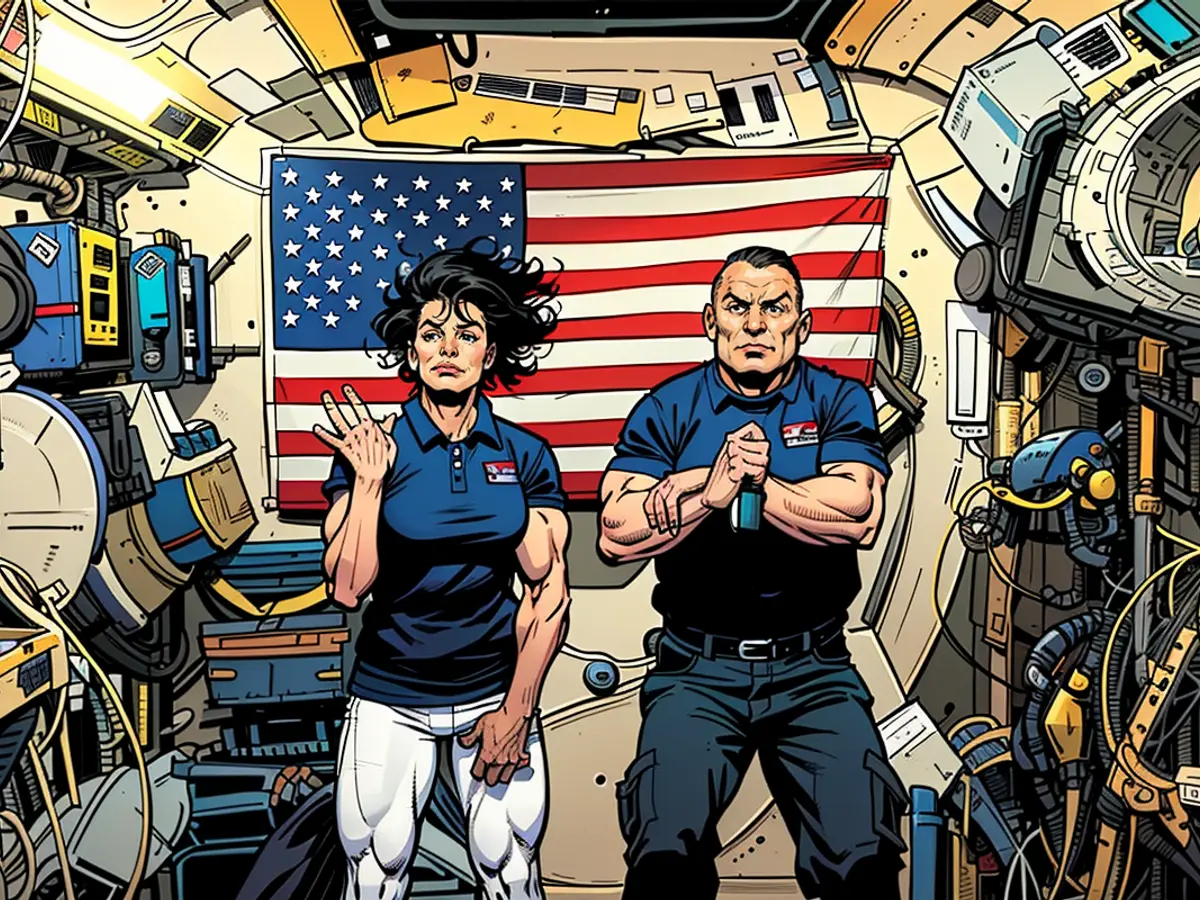NASA encounters one of its most challenging dilemmas
Originally meant to stay on the ISS for merely a week, Sunita Williams and Barry Wilmore have now found themselves stranded there for close to three months. NASA is grappling with "painful discussions" and is facing one of its toughest decisions in its history.
Williams and Wilmore had prepped for a week at the ISS, but trouble with their spacecraft has left them in limbo. Nearly three months have passed since their arrival, and the path back to Earth remains unclear. NASA must make a historically complex decision and has set a deadline around the end of the month for this.
Before their launch in early June, Williams spent time with her dogs, and Wilmore tended to his lawn, as per NASA. Things seemed serene and ordinary. However, events took an unexpected turn. The issue at hand is known as "Starliner". Although Williams and Wilmore arrived safely at the ISS during the first manned test flight of the spacecraft, there were issues with helium leaks and engines. The originally scheduled return flight in mid-June was canceled, and since then, Williams and Wilmore have been stuck on the space station.
Risk or Time-Consuming Solution?
NASA is faced with a tough question: Can Williams and Wilmore return to Earth with the "Starliner"? For weeks, teams from NASA and Boeing have been conducting tests and investigations in space and on Earth to find out. However, these efforts haven't led to any clarity yet.
Two main options are under consideration: the risky return with the "Starliner" or switching to a flight with the "Crew Dragon". For the first option, the engine and helium leak problems would need to be resolved, a feat yet to be achieved. The alternative is for the "Starliner" to return to Earth without Williams and Wilmore, which would necessitate extensive software reconfiguration. The launch of "Crew 9" with the "Crew Dragon" from SpaceX, which was postponed from August to September due to current issues, would then be carried out with only two astronauts instead of four. Williams and Wilmore would form part of this crew and would likely return to Earth with their two colleagues in early 2025. However, they would require special spacesuits, as those from the "Starliner" are not compatible with the "Crew Dragon". NASA and SpaceX have not announced who from the original crew would not be flying in this situation.
"Decision based on data"
"We want the decision to be based on data, not on feelings," says NASA manager Ken Bowersox. Ultimately, the decision lies with NASA administrator Bill Nelson, who emphasizes that the astronauts' safety is always the top priority.
Williams and Wilmore must prepare for more time on the ISS. With the "Starliner", they could potentially return to Earth as early as September, but with the "Crew Dragon", it might be as late as February - in which case, their one-week stay on board would have spanned nearly nine months. The 58-year-old Williams and the 61-year-old Wilmore are seasoned astronauts, and this is not their first stint in space or on the ISS. They are trained for all contingencies and are involved in all discussions, says NASA manager Steve Stich. They are "ready to do whatever is necessary."
"With a test flight like this, one is always prepared for the possibility that it could take longer," says NASA manager Joel Montalbano. "But they're doing well, they're fully integrated with the rest of the crew and just as busy as any other crew up there. Of course, they're also human, and all this is difficult for crew members and their families, we know that. But they're professional astronauts and they're doing great." Williams and Wilmore are a valuable addition to the ISS crew, NASA stresses repeatedly - but they also consume additional resources like food and hygiene items. Moreover, they are now exposed to higher radiation than originally planned for an extended period.
Does the "Starliner" have a future?
Despite the focus on the astronauts: Behind the scenes, it's also about the future of the "Starliner". The spacecraft developed and built by aerospace company Boeing for NASA was supposed to regularly send astronauts to the ISS by now - as an alternative to SpaceX's "Crew Dragon", which has been doing so reliably for years. However, the partially reusable spacecraft, which consists of a crew capsule and a service module, is currently facing severe challenges. In 2019, the spacecraft failed to reach the ISS during its first unmanned test, and while a second attempt succeeded in 2022, problems have since piled up and led to numerous delays.
"We want to stick to the idea of having two alternative transportation systems," emphasizes NASA manager Bowersox. "The problems are solvable, and then I see a bright future for the 'Starliner'." Both Boeing and NASA continue to back this stance - just like Bowersox expressing his "great respect for the Boeing team". At the same time, the manager also says: "The answer is always in the data."
The space travellers, Sunita Williams and Barry Wilmore, are currently waiting for a solution to the issues with their spacecraft, which have extended their stay on the ISS to nearly three months. The decision on whether Williams and Wilmore can return to Earth with the "Starliner" or switch to a flight with the "Crew Dragon" rests with NASA, prioritizing the astronauts' safety.







